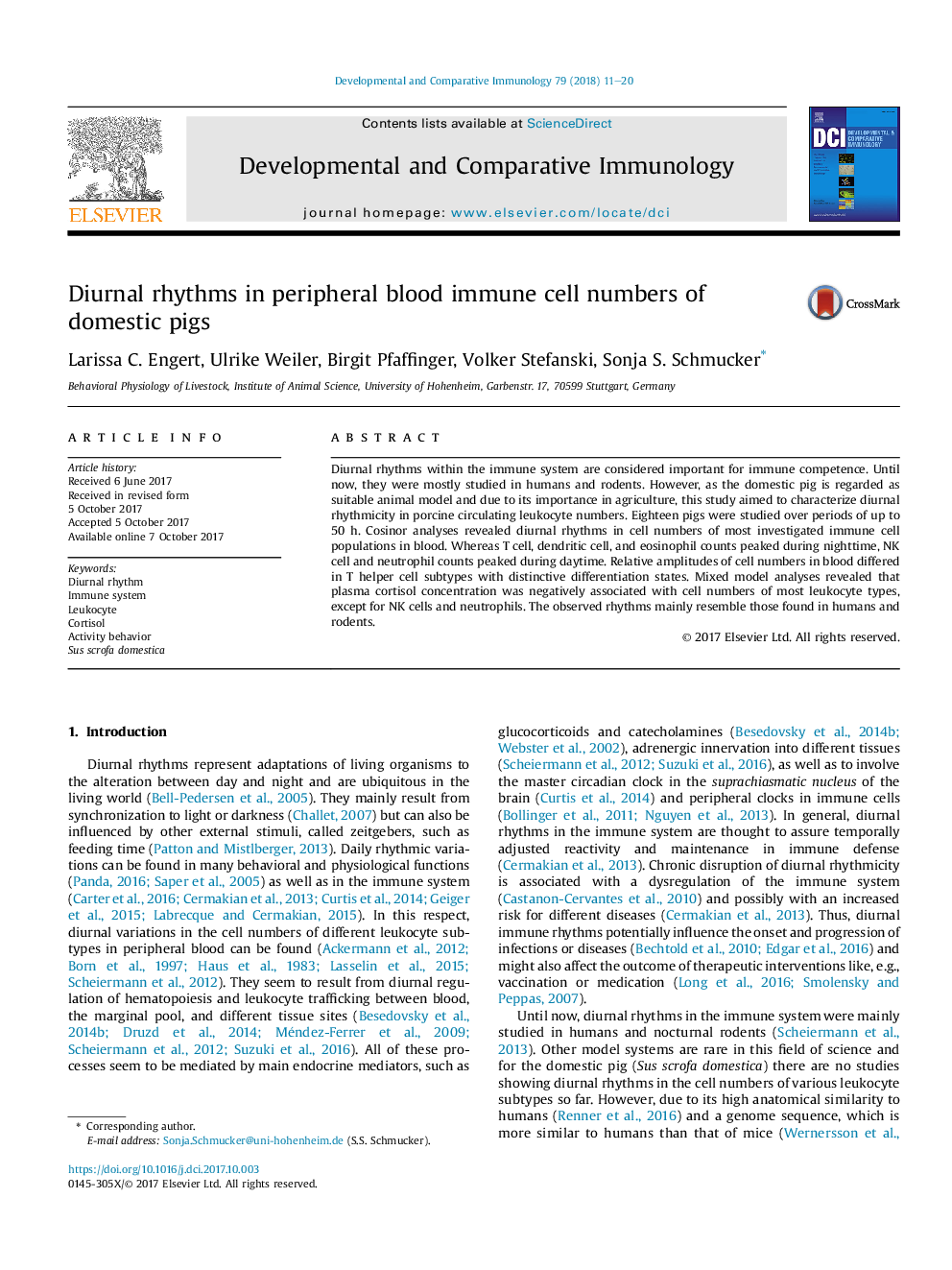| Article ID | Journal | Published Year | Pages | File Type |
|---|---|---|---|---|
| 5540012 | Developmental & Comparative Immunology | 2018 | 10 Pages |
Abstract
Diurnal rhythms within the immune system are considered important for immune competence. Until now, they were mostly studied in humans and rodents. However, as the domestic pig is regarded as suitable animal model and due to its importance in agriculture, this study aimed to characterize diurnal rhythmicity in porcine circulating leukocyte numbers. Eighteen pigs were studied over periods of up to 50Â h. Cosinor analyses revealed diurnal rhythms in cell numbers of most investigated immune cell populations in blood. Whereas T cell, dendritic cell, and eosinophil counts peaked during nighttime, NK cell and neutrophil counts peaked during daytime. Relative amplitudes of cell numbers in blood differed in T helper cell subtypes with distinctive differentiation states. Mixed model analyses revealed that plasma cortisol concentration was negatively associated with cell numbers of most leukocyte types, except for NK cells and neutrophils. The observed rhythms mainly resemble those found in humans and rodents.
Related Topics
Life Sciences
Biochemistry, Genetics and Molecular Biology
Developmental Biology
Authors
Larissa C. Engert, Ulrike Weiler, Birgit Pfaffinger, Volker Stefanski, Sonja S. Schmucker,
